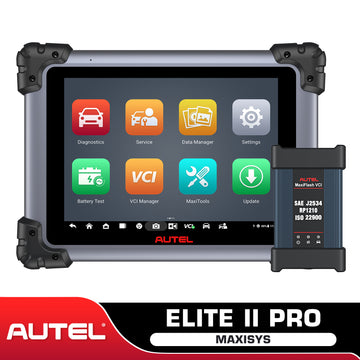
OBD2 Categories
Recent Articles
-
Difference Between Autel Maxisys Ultra & Autel MaxiCom Ultra Lite S December 27, 2024
-
Autel Maxisys Elite II Pro VS MS909 VS MS919 VS MS Ultra VS Ultra Lite S December 12, 2024
-
Autel Maxisys MS906 PRO VS MS908S PRO II VS MK908 II VS Elite II Pro December 10, 2024

New Releases
What is OBD --- On-Board-Diagnostics?
OBD, or on board diagnostics, was first introduced by General Motors in 1981. This system can monitor the conditions of the engine electronic control system and other functional modules of the vehicle in real time during the operation of the car. If any malfunctions in the car are found, the specific fault will be determined according to a specific algorithm, and the diagnostic fault code (DTC , Diagnostic Trouble Codes) will be stored in the system. Mechanics are able to quickly and accurately to find out what's the malfunction and location of the fault according to the diagnostic fault code.
OBD-II is an improvement over OBD-I in both capability and standardization. Since 1996 all cars manufactured for the United States of America have been required to have an OBDII System. The OBD-II on-board computer has a 16-pin port under the dashboard on the driver's side. It allows technicians or anyone else to use special scanning tools to read error codes. Originally implemented to monitor and maintain EPA (Environmental Protection Agency) emission standards, OBDII is now used as an engine management system in every modern vehicle.
On-board diagnostics is most valuable to the car owners. Not only does it tell you that you the potential problems and things that needs to be fixed, it can also help you save money by identifying the problem early on while it is still a minor issue needing minor repair. It helps you skip the trial-and-error part, too.

Types of OBD-II scanners
There are two basic types of OBD-II scanners in the market.
- Code reader
OBD-II code readers are usually inexpensive and have no extra devices. They can read and clear the codes of any vehicle equipped with OBD-II. These devices have some inherent limitations because they usually lack any information about manufacturer-specific codes and provide limited access (or no access) to other data.
- Scanning tool
OBD-II scanning tools are relatively expensive, but they feature a variety of different functions. Scanning tools provides more access rights or manufacturer-specific code information, real-time and recorded data, and advanced troubleshooting information.
What can OBD-II scanners do?
The function of a OBD-II scanner depends on whether it is a basic "code reader" or a more advanced "scanning tool". Basic code readers can only read and clear codes, while advanced scanning tools can view real-time data and recorded data, providing an extensive knowledge base and providing an access to bidirectional control and testing, and other advanced functions.
How does the OBD-II scanner work?
Since the OBD-II system is standardized, the OBD-II scanner is relatively simple to use. They all use the same connectors defined by SAE J1962. For basic scanning tools, you only need to insert the universal plug into the OBD-II diagnostic port in the car to work. Some advanced scanning tools also provide Bluetooth Wireless Connection.
All OBD-II scanners provide basic functions, including the capability to read and clear codes.
























